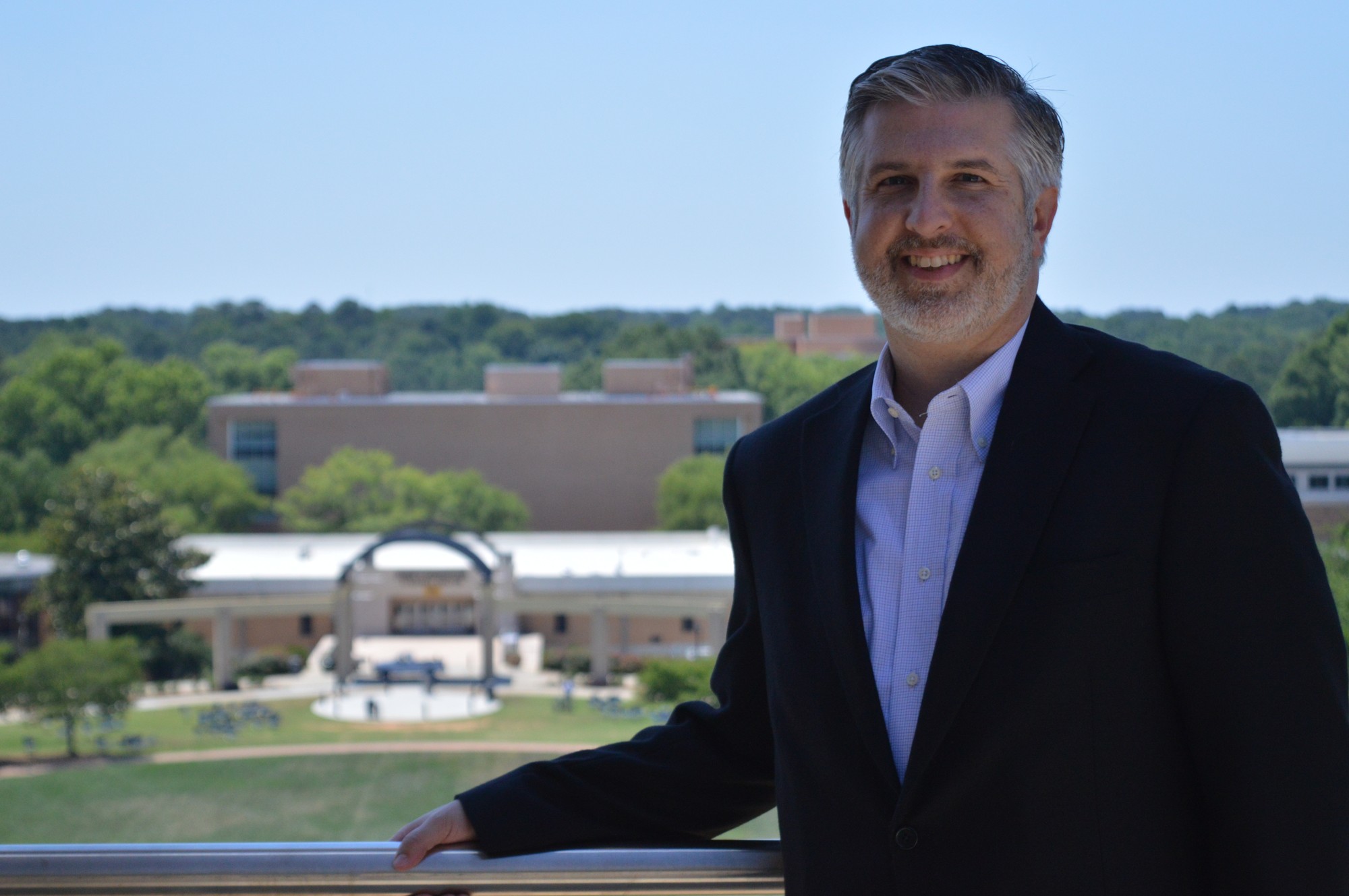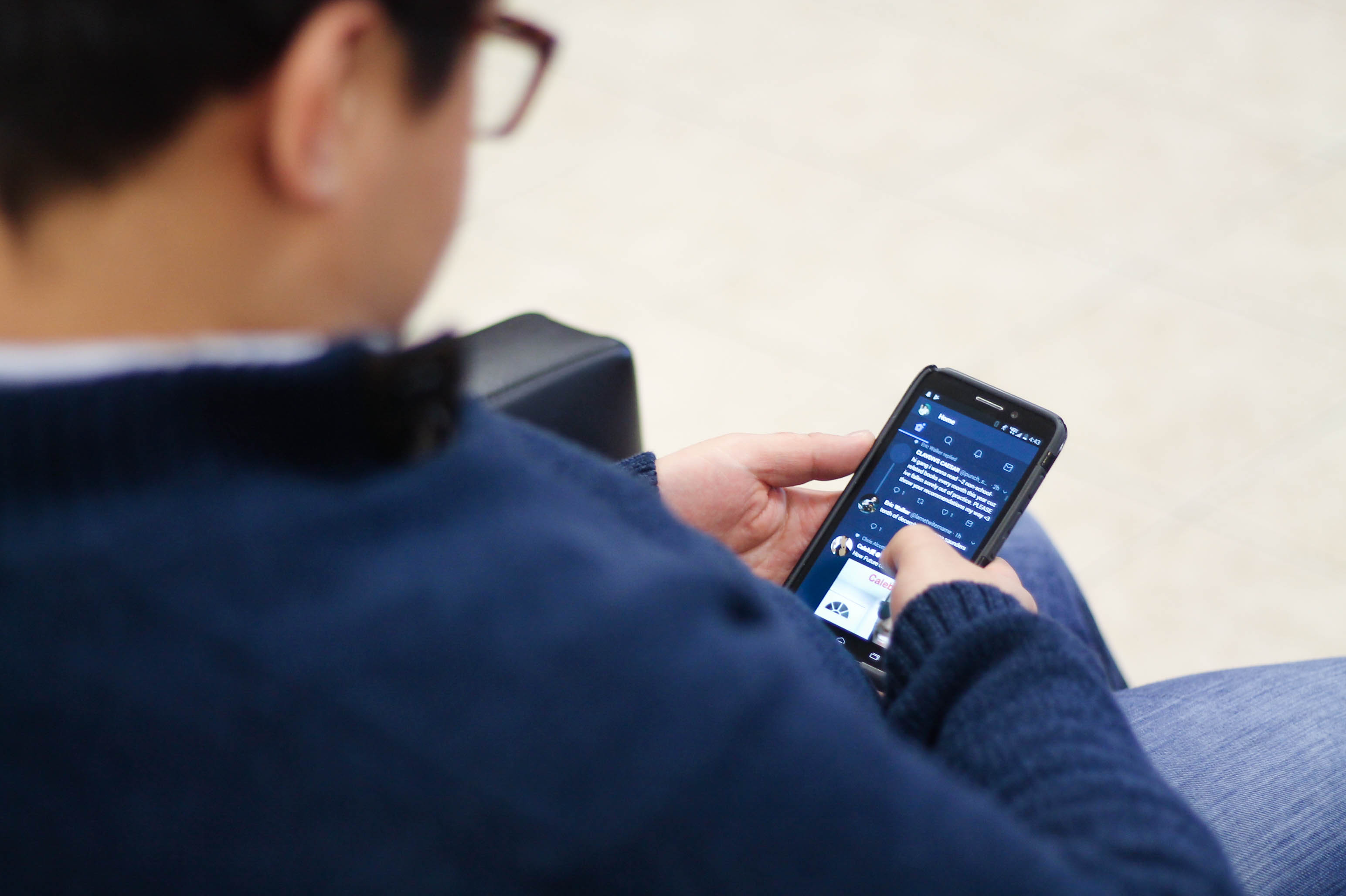KSU has an ongoing security plan that includes the continuous updating of security cameras and lighting around campus.
Assistant Vice President of the Department of Strategic Security and Safety, Robert Lang, discussed some of the changes with security cameras that are going on around campus. “Originally, they were all analogs. The central control wasn’t really created until, I guess, about last year. We had the equipment, we just didn’t have a place for it,” Lang said.
The change from an analog system to a centrally controlled system means setting up cameras that can connect and record through a network. “The majority of them [cameras] are IP; Internet Protocol type cameras – this enables me to send the images over the network and I can store them centrally,” Lang said.
“Some of the old analog cameras, which are kind of like you going into RadioShack to buy a camera system. It works for at home but it’s not centrally controlled,” said Lang. “We have a few of those [analog cameras] – we’re trying to get rid of them and we will replace them with better cameras, but most of the campus has the IP camera situation.”
The switch to IP could not happen immediately, because the campus is so large, There is still a mix of analog and IP cameras making up a total of more than 500 security cameras.
“Anytime you change over, it costs money. We’re at 50-terabyte storage right now and every time I add a camera, it increases the cost. It just depends on funding and it depends on the need,” Lang said.
Lang explained that analog cameras have to be monitored individually, with each building monitoring its own camera footage. In this system, parking would be monitoring the cameras for the parking decks; the Bookstore would monitor its own cameras; and the Student Center would monitor those cameras. A decision was made to create a central monitoring system to enable a fast and appropriate response, especially crucial in emergency and disaster type situations.
“We really need to know what is happening around the entire campus to be able to respond properly,” Lang said. “During an emergency we’ll be able to pull up any camera and see what’s happening and then we will assist the police department in doing what they do. They’re going to be out fixing a problem during a disaster or an emergency and my office is designed to say, ‘Okay, can we give you real-time information?’”
Situations in which live monitoring of the campus would be useful range from potential school shootings to simple theft. The SSS Department is responsible for designing messages, sending out alerts and keeping those on and around campus updated with issues.
Prior to the 2007 Virginia Tech shooting, the cameras were set up based on different issues.
“The cameras were originally designed to see if we had thefts in a building, [then] we could go back and review the footage. When Virginia Tech happened, I think we kind of changed the philosophy. So it moved into more of the emergency management type stuff,” Lang said.
Although they’re there for the typical safety reasons, the cameras are also part of a bigger plan that involves more than the mere monitoring of students’ activities; the cameras also have preventative purposes. “When people know that we have cameras on the campus, they think twice. [But] we don’t monitor all day long,” Lang said. ”We probably would never do that. It’s more when it happens, we’ll do it, and we’ll respond. We do have the capability to go back, because we’re recording, to be able to see what happened.”
To improve the camera efficiency, lighting conditions must also be taken into account.
“Sometimes after Thanksgiving and before the holidays, my office, facilities, the police department, the student government are going to do a walk through of the campus to make sure that we have lights,” Lang said.
Like most changes, the ones on campus have a cost. Lang said that no fixed budget exists for these improvements, so the changes happen in increments as money comes in. When something happens, it sometimes speeds up the process. Money came in last year after a KSU student had a heart attack on campus.
“He expired, and it was because we didn’t have an AED close by,” Lang said. “Within a few weeks I had money to buy one for every building . I’m not saying that’s what it takes, but sometimes priorities change.”
Lang’s department is meant to keep up with what’s going on around KSU, and to incorporate what is most needed by the students, faculty and staff.
“Why it’s called Strategic Security and Safety is because we look at it from the 30,000 foot view of ‘What do we need to keep the campus safe?’”
Having a safe campus is not just about having a police force. The camera systems, the crisis coordinator program and safety initiatives are all in conjunction.
“That’s part of all of that big plan, so it’s not just one entity that’s running around here protecting everybody. It’s a lot of people, and our job here is to put it all together,” Lang said.




